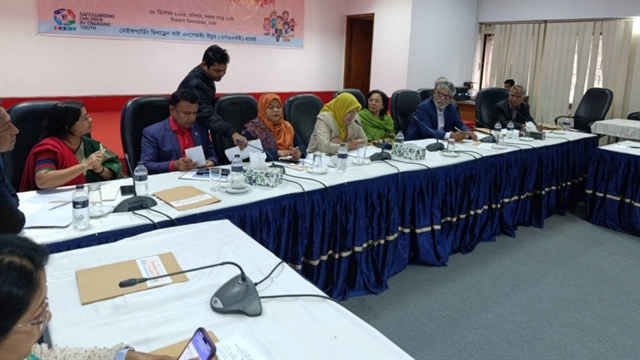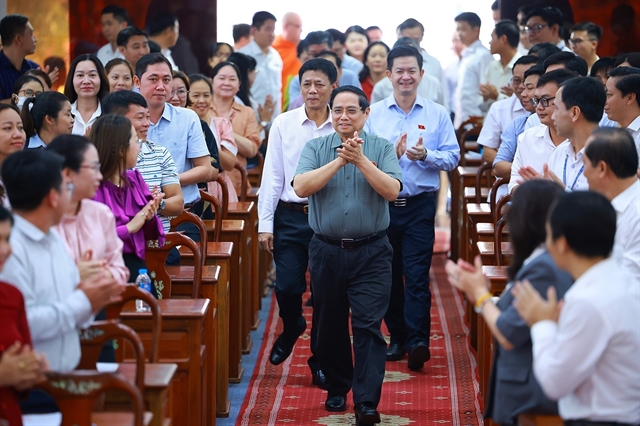 Life & Style
Life & Style

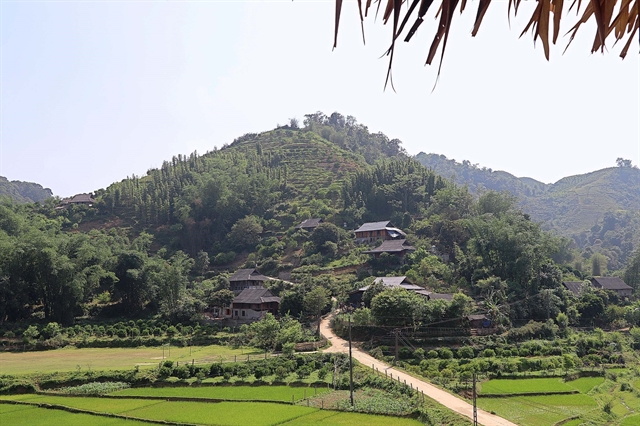 |
| Houses on stilts of Mường people are located on hillsides in Vân Sơn Commune, Tân Lạc District. VNA/VNS Photo Thanh Hải |
Thanh Nga
As one of the four ancient ethnic Mường regions and the cradle of the famous Hoà Bình culture, the unique culture and peaceful landscape of Tân Lạc District is an important resource to help the district develop sustainable tourism.
Tân Lạc is an ideal destination for those who both love Mường culture and want to enjoy a peaceful life away from the hustle and bustle of cities.
Located at the gateway of the northwest region, about 100km from Hà Nội, the district has a large, fresh and airy space with preserved traditional values such as Mo Mường -- a popular ritual ceremony which has become the unique cultural heritage of the Mường ethnicity, Mường gongs and many unique traditional handicraft products such as hand-loom weaving, knitting, cần wine (rice wine stored in a big jar and drunk with long bamboo stems) and folk festivals.
Along with that are 11 scenic spots, archaeological relics at the provincial and national levels as well as spiritual sites such as Bụt, Mường Chiềng and Nam Sơn caves.
The ancient Hòa Bình area consists of four Mường regions arranged in the order of "first is Bi, second is Vang, third is Thàng and fourth is Động", in which Mường Bi is the largest and richest. Today, the land of Mường Bi is Tân Lạc District, the land of rich valleys with rice fields, gardens, and fruit trees.
The highland area of Tân Lạc includes Vân Sơn, Ngổ Luông and Quyết Chiến communes adjacent to the primaeval forest area. On hot summer days, the weather here is very cool. The people here are honest, kind and still preserve the ancient Mường culture.
Overcoming the mists on the winding road, the valley of Vân Sơn, or Lũng Vân, gradually appears with natural landscapes and a fresh, cool climate.
Located at an altitude of 1,200m above sea level, surrounded by Trâu, Có and Tiên mountains, Lũng Vân is surrounded by clouds all year round. It is also known as the "valley of clouds".
With the beautiful natural landscape and endless terraced rice fields, in recent years, the commune has opened several homestays to serve tourists.
Hà Thị Thậm, owner of Hải Thạn homestay in Chiến Hamlet, Vân Sơn Commune said: "When the COVID-19 pandemic was basically under control, in the past few months, my homestay welcomed many groups of tourists. They are satisfied with the resort space, cool climate and the friendliness, enthusiasm and hospitality of the local people. For some international guests, they are very impressed with adventurous trekking routes, discovering the mysterious beauty of Nam Sơn Cave.”
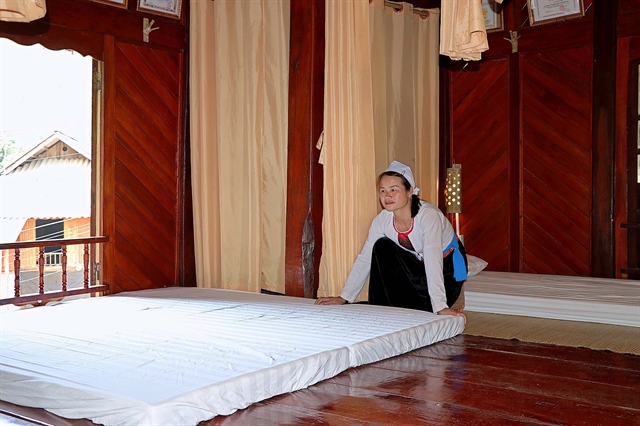 |
| Hà Thị Thậm, owner of Hải Thạn homestay, prepares accommodation for tourists. VNA/VNS Photo Thanh Hải |
We also had the opportunity to visit Lũy Ải Village, Phong Phú Commune -- one of the ancient Mường villages. Our first impression is the peace of houses on stilts hidden under the shady trees, and the peaceful arches with beautiful flower trellis.
But perhaps the attraction and retention of tourists when coming to Lũy Ải is the cultural identity that is expressed right in the words and voices of the people here, visitors will always receive greetings with a friendly smile.
Inside the traditional wooden houses, every object has its own story, associated with the traditions of the family and the village. It can be seen in the Mường gongs set on the wall, the traditional costumes worn exclusively for the festival and the bundle of bamboo poles at the foot of the house ready for bamboo dances.
It is a pleasure to go to a place where all doors are open to welcome and the people are hospitable, willing to go with you to the forest to pick bamboo shoots, or the stream to catch fish and gather together for a warm meal.
In addition to Lũy Ái Village, Tân Lạc has many destinations with national cultural identity.
The Đà River reservoir, or Hòa Bình Lake, area in Suối Hoa Commune is planned as the core region of the province's national tourism, with great potential for developing various types of eco-tourism, convalescence and cultural tourism.
Ngòi Village in Suối Hoa Commune is one of the lakeside villages with pristine caves. Although it is only a small village, it is still considered one of the most beautiful villages of Hòa Bình like a "hidden gem in the rock".
We immediately felt the clear, pure and cool atmosphere of green trees covering the whole village, right next to it is a huge clear lake sparkling in the sun and surrounded by majestic mountains.
The village still retains the original features with the houses on stilts roofed with palm leaves preserved according to the culture of the Mường.
We immersed ourselves in the cool water of Hòa Bình Lake and played games at the floating water park here.
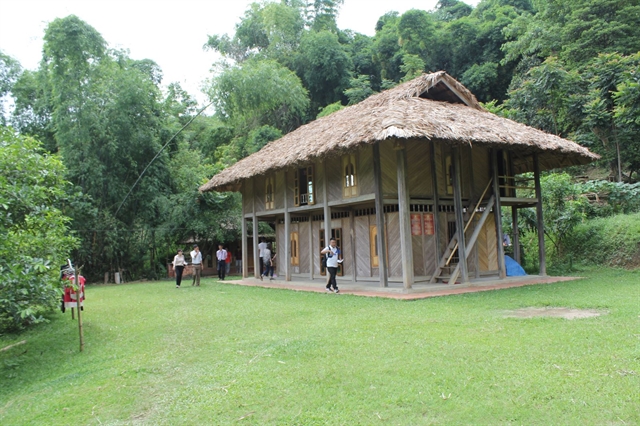 |
| A homestay in Ngòi Village, one of the lakeside villages in Tân Lạc District. Photo moitruongdulich.vn |
According to Đinh Sơn Tùng, head of the Culture and Sports Department of Tân Lạct, the district actively invests in order to maintain and constantly promote the good cultural traditions of the ethnic communities in the area.
With the available potential and strengths, Tân Lạc promises to be a successful destination for investors in the fields of eco-tourism development, resort tourism and experience tourism, associated with the development of commercial services and clean agriculture. VNS



